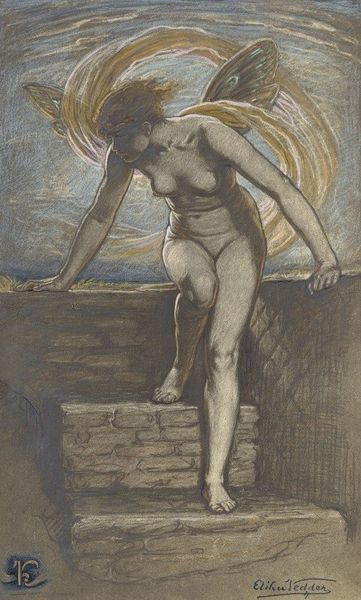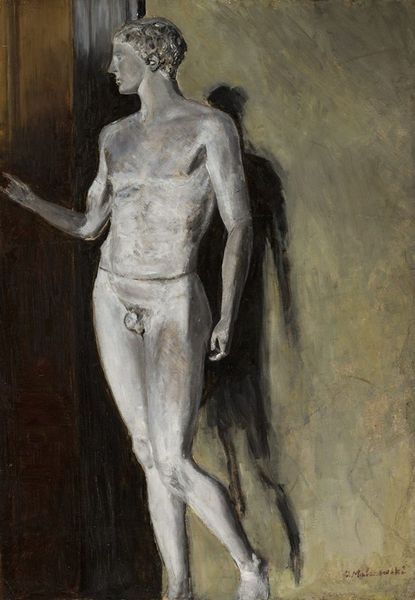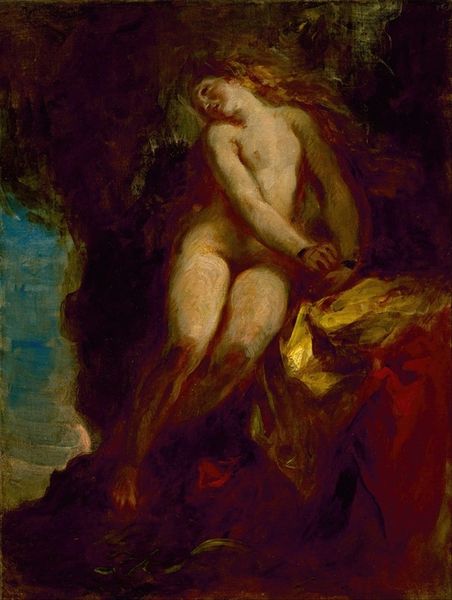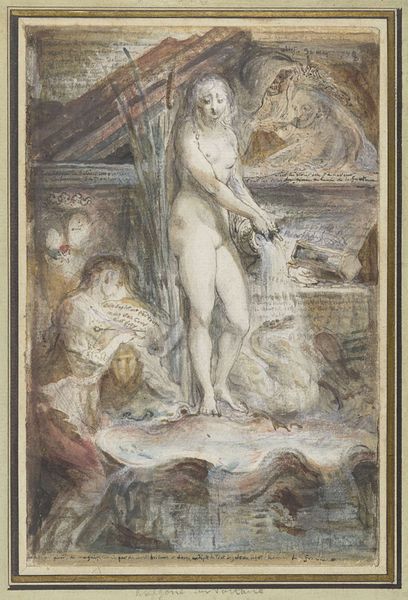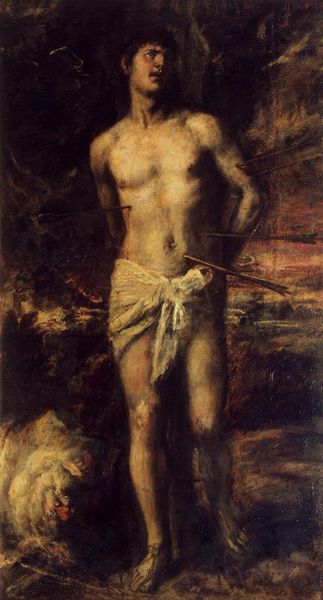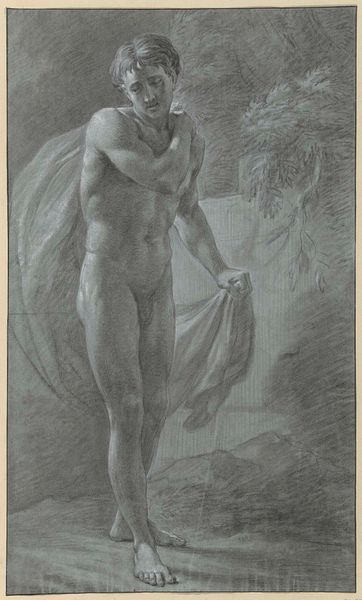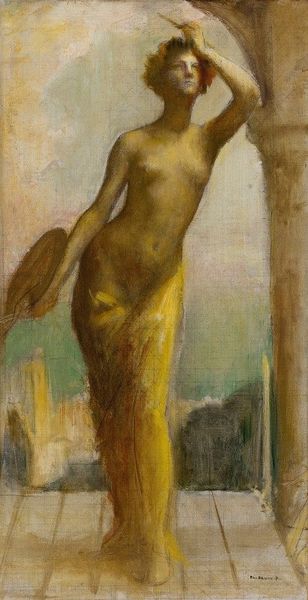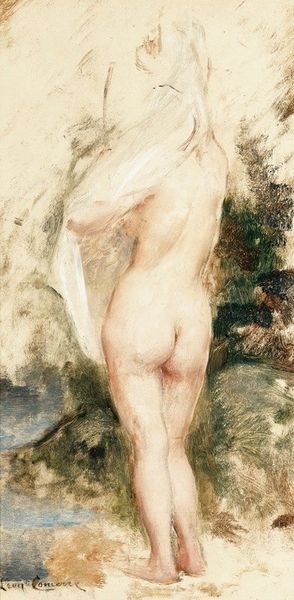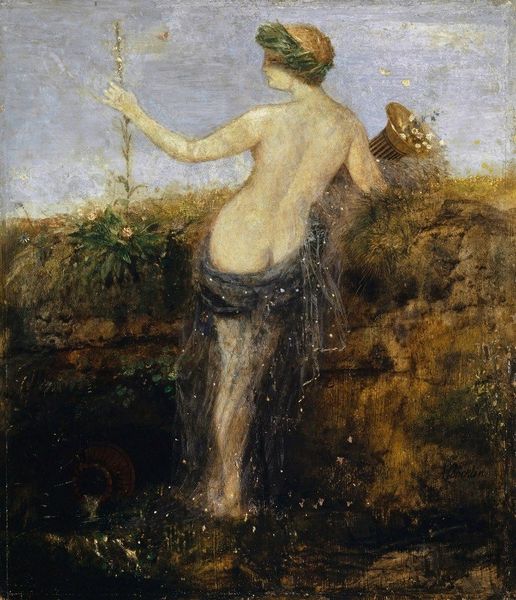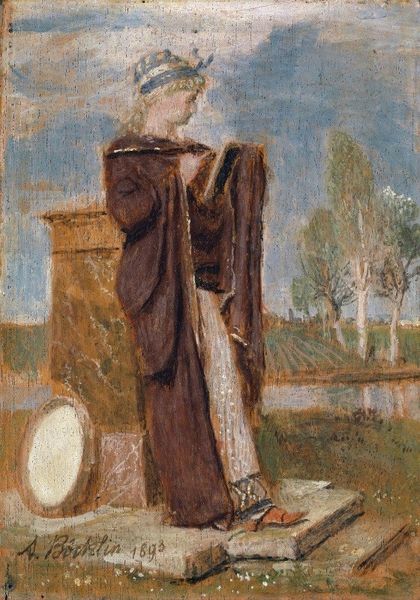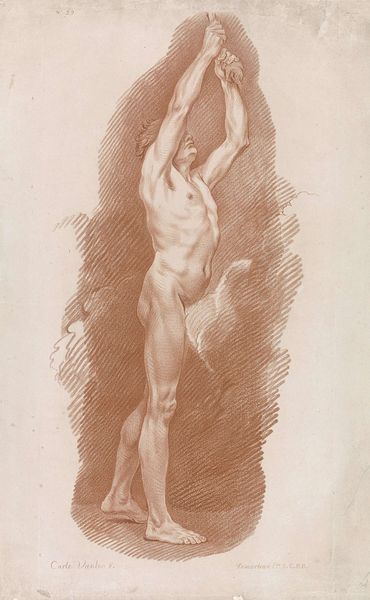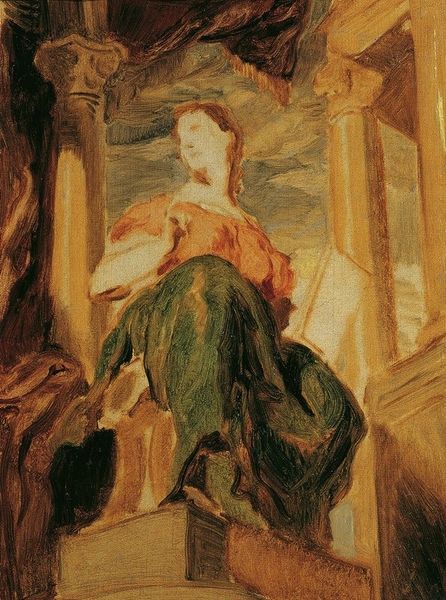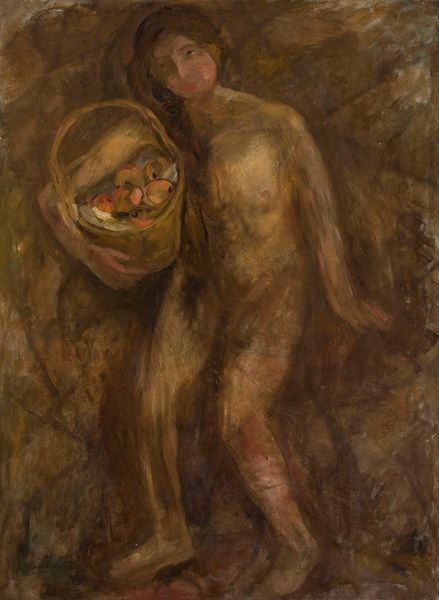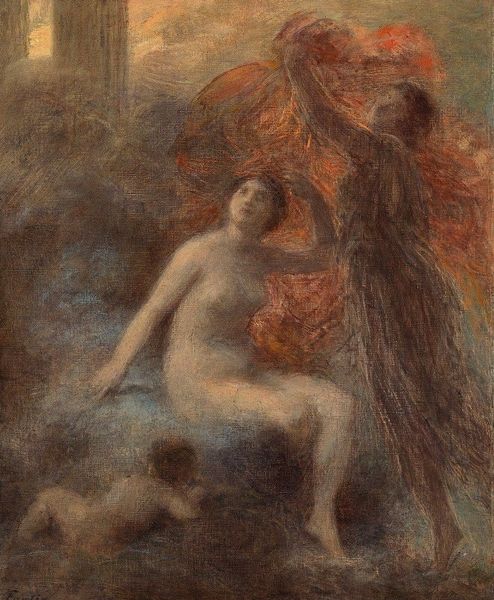
Copyright: Public Domain: Artvee
Editor: So this is "The Troubadour," painted by Honoré Daumier sometime between 1868 and 1873. It's an oil painting, and there's something almost theatrical about the pose. What stories do you think Daumier is trying to tell with this piece? Curator: Notice how the troubadour's gaze is directed upwards, almost in supplication. Consider the role of the troubadour historically – a figure of romance, yes, but also a transmitter of news, a carrier of cultural memory. What cultural messages might this painting be preserving or questioning? Editor: That's interesting, I hadn't thought about the news aspect. I was so focused on the romance implied by the lute. Curator: The lute itself is crucial. In its shape and the way it’s held, what does it signify to you beyond simply a musical instrument? Does it evoke a specific historical period, a yearning for something lost? Think about the weight of history these symbols carry. Is Daumier playing with nostalgia or making a deeper statement about artistic traditions? Editor: So the lute is almost a key, unlocking layers of meaning beyond just the romantic ideal...a link to tradition. The way he is glancing upwards does not strike me so much as religious supplication as much as him almost forgetting his lines during the show! Curator: Perhaps, and that is what is compelling about it, the vulnerability of it! Daumier uses this cultural symbol, a figure seemingly confident in his art, however also hinting at fallibility. The fact he almost cannot remember his lines demonstrates the pressure associated with carrying the burden of cultural memory. What is that weight to the individual? Editor: It’s fascinating to think about Daumier embedding those anxieties into a seemingly straightforward romantic image. I'll definitely look at other artworks now and be much more aware of symbolic weight, especially cultural continuity in something like an instrument. Curator: Precisely! Visual symbols often carry an emotional and psychological burden, revealing how the past continually informs the present. This piece helps us think about these links and how we, the audience, participate in this continuous interpretation.
Comments
No comments
Be the first to comment and join the conversation on the ultimate creative platform.
